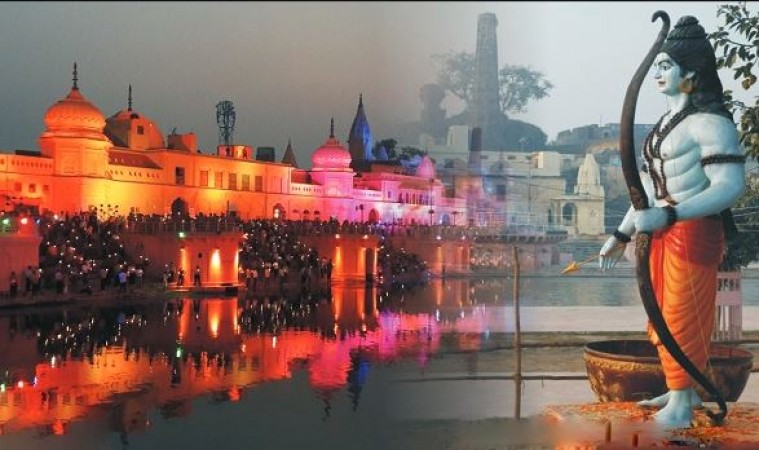
Ayodhya, the sacred city, is set to witness the consecration ceremony of Lord Rama's idol at the majestic Shri Ram Temple on January 22, 2023. The history of the Ram Janmabhoomi, often discussed and debated, dates back to ancient times.
Ayodhya, known as the city of pilgrimage, was established by Vaivasvat Manu in the Satyug era. It is the birthplace of Lord Rama, as described in the epic Ramayana by Valmiki. After ruling for several years, when Lord Rama took Samadhi in the sacred waters, Ayodhya became desolate. According to mythological beliefs, when King Vikramaditya of Ujjain visited Ayodhya, miraculous events unfolded, revealing it to be the divine land of Lord Rama. Subsequently, he initiated the construction of the grand Ram Temple, adorned with 84 pillars made of black stone.
Over the years, various rulers took charge of the temple's maintenance. However, in the 14th century, during the Mughal rule in India, the Ram Janmabhoomi was destroyed, and the Babri Masjid was erected in its place. In 1525, the Mughal commander Mir Baqi, under Babur's orders, demolished the Ram Janmabhoomi Temple. The Babri Masjid had three domes, and outside one of them was a platform where the worship of Lord Rama's infant form took place. This was known as the Ram Chabutra. In 1949, beneath the central dome of the Babri Masjid, the same idol that had been worshipped for centuries on the Ram Chabutra was discovered.
Following decades of dispute and legal battles over the Babri Masjid and the Ram Janmabhoomi Temple, the culmination came with the inauguration of the Ram Temple. The total land allocated for the temple is 67 acres, with the temple itself occupying 2 acres. Initially, the main spire of the temple was planned to be 128 feet high, but it has now been increased to 161 feet. Instead of three domes, the temple will now feature five domes along with the main spire.
The construction and consecration of the Ram Temple mark a historic moment in Ayodhya, bringing to an end the longstanding controversy and opening a new chapter in the city's rich religious history. The temple stands not only as a symbol of faith but also as a testament to the resilience and unity of the people who have contributed to its restoration and construction over the centuries. The Shri Ram Temple in Ayodhya is poised to become a beacon of cultural and spiritual significance, drawing devotees and visitors from around the world to witness the grandeur of Lord Rama's abode.
DRDO Successfully Tests Next-Gen AKASH Missile in Coastal Odisha
Agniveers Integration: General Pande Confirms Success in Army Deployment
Heavy Fog Disrupts Train Services with Over 20 Service Delays En Route to Delhi